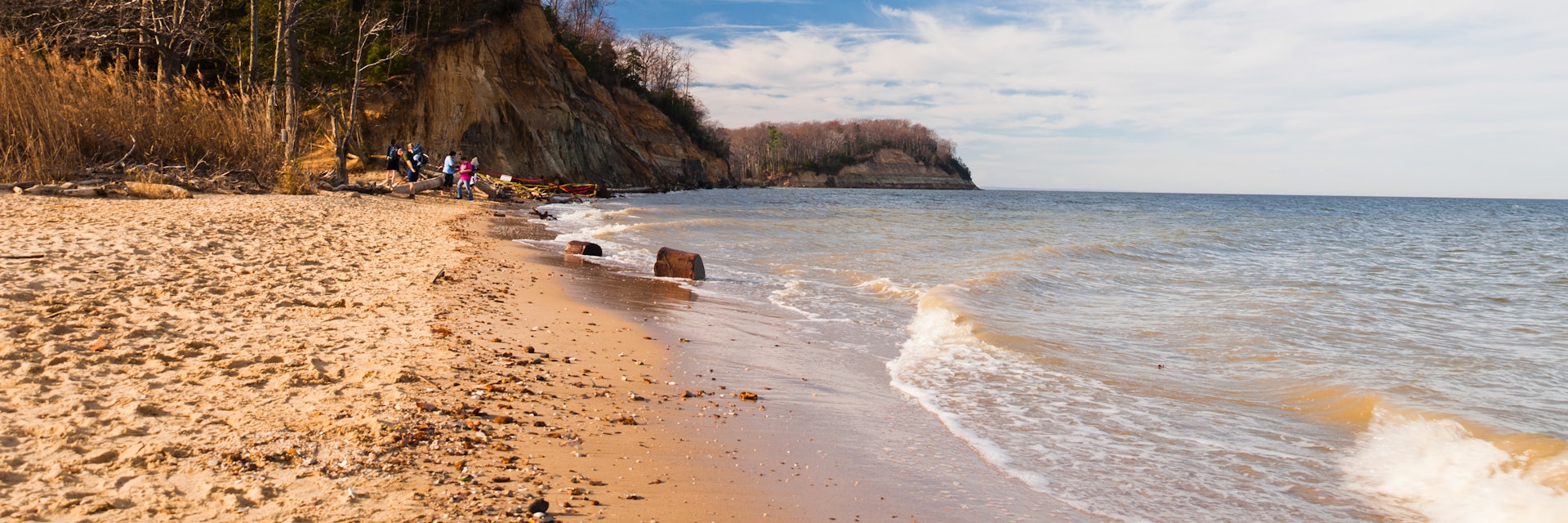In Southern Maryland, skinny Calvert County scratches at the Chesapeake Bay and the Patuxent River. This is a gentle landscape ('user-friendly' as a local ranger puts it) of low-lying forests, estuarine marshes and placid waters, but there is one rugged feature: the 10- to 20-million-year-old Calvert cliffs. These burnt-umber pillars stretch along the coast for some 24 miles, and form the seminal landscape feature of Calvert Cliffs State Park, where they front the water and a pebbly, honey-sand beach scattered with driftwood and drying beds of kelp.
Back in the day (10 to 20 million years ago that is), this entire peninsula sat submerged under a warm sea. Eventually, that sea receded but when it did it left the fossilized remains of thousands of prehistoric creatures embedded in the cliffs. Fast forward to the 21st-century, and one of the favorite activities of Southern Maryland families is coming to this state park, strolling across the sand and plucking out fossils and sharks' teeth from the pebbly debris near the base of the cliffs, at the end of the Red Trail. Note that you are allowed to hunt and collect fossils on the beach, but you cannot dig into the cliffs or hunt below the cliffs. Check the website for the location of the beach and other specifics. More than 600 species of fossils have been identified at the park. In addition, a full 1079 acres and 13 miles of the park are set aside for trails and hiking and biking, and it's not uncommon to see locals riding horses here as well.
While the park is pet and family friendly, fair warning: it's a 1.8-mile walk from the parking lot to the open beach and the cliffs, so this may not be the best spot to go fossil hunting with very small children unless they can handle the walk. Also: do not try and climb the cliffs, as erosion makes this an unstable, and unsafe prospect.
The park is 75 miles south of Baltimore via US 301 and MD-4.


